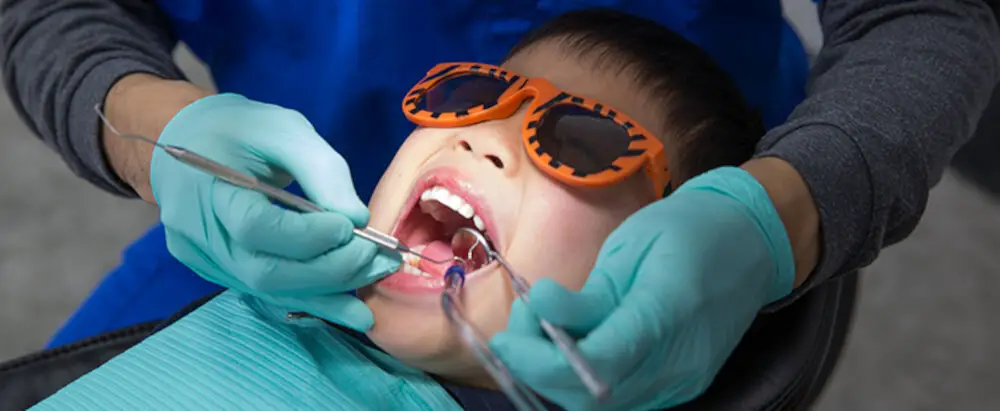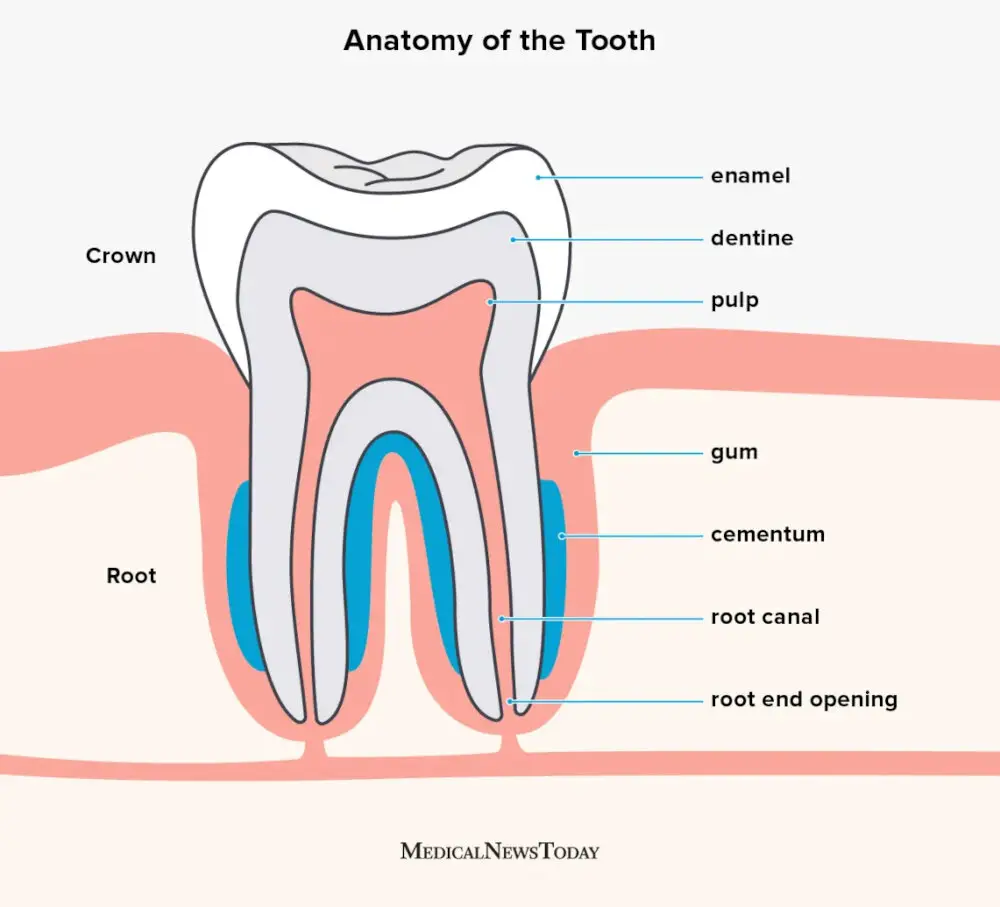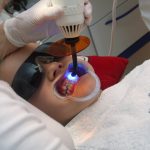Get a Perfect Smile: Learn How to Close Gaps in Teeth with these Simple Tips

A perfect smile is one of the most sought-after physical features. It can significantly boost one’s confidence and self-esteem. However, not everyone is born with a set of naturally aligned teeth. Some people have gaps in their teeth, which can be a source of embarrassment and discomfort. Fortunately, there are several ways to close gaps in teeth, ranging from simple tips to more complex dental procedures. Closing gaps in teeth can be achieved through various methods, such as orthodontic treatments, cosmetic dentistry, and DIY remedies. Orthodontic treatments involve the use of braces, aligners, or retainers to move teeth into the desired position. Cosmetic dentistry procedures, such as bonding, veneers, and crowns, can also be used to close gaps and improve the appearance of teeth. DIY remedies, such as wearing dental bands or using teeth gap bands, may also be effective for minor gaps. In this article, we will explore some simple tips that can help you close gaps in teeth and achieve a perfect smile.
Gaps in teeth, also known as diastemas, are spaces between two or more teeth. These gaps can occur naturally due to differences in tooth and jaw size, or they can be caused by habits such as thumb sucking or tongue thrusting. While some people may embrace their gaps as a unique characteristic, others may feel self-conscious and seek ways to close them. Fortunately, there are several options available, including orthodontic treatments like braces or clear aligners, dental bonding, and veneers. Consulting with a dental professional can help determine the best course of action to achieve the desired results and give individuals the confidence to show off their perfect smile.
Having a perfect smile is important for various reasons. It enhances one’s appearance, boosts self-confidence, and improves overall oral health. A bright smile can make a great first impression and leave a lasting impact on others. It is also a reflection of one’s hygiene and health. A perfect smile can help prevent dental problems such as gum disease, tooth decay, and bad breath. It can also make it easier to speak and chew properly, leading to better overall health and well-being. Therefore, taking care of your teeth and achieving a perfect smile is not only important for aesthetic reasons but also for maintaining good oral health.
Causes of Gaps in Teeth

Gaps in teeth, also known as diastema, are a common dental issue that many people face. Diastema can occur due to several reasons, including genetics, thumb-sucking, tongue thrusting, and gum disease. Genetics play a significant role in causing gaps in teeth, as the size of teeth and jaw structure are inherited from parents. Thumb-sucking and tongue thrusting habits can also cause the front teeth to push forward, resulting in gaps between them. In some cases, gum disease can cause teeth to shift, leading to gaps between them. Additionally, certain medical conditions, such as cleft lip and palate, can also cause gaps in teeth. Poor oral hygiene can also contribute to the development of gaps in teeth. Plaque buildup can weaken the teeth and cause them to shift, leading to gaps. Moreover, missing teeth can also result in gaps as the surrounding teeth tend to shift and fill the empty space. Individuals who have a habit of grinding their teeth may also develop gaps due to the excessive pressure placed on the teeth. Finally, certain lifestyle factors, such as smoking and poor diet, can also contribute to the development of gaps in teeth. Therefore, it is essential to maintain good oral hygiene, quit smoking, and eat a healthy diet to prevent the development of gaps in teeth.
Genetics play a significant role in determining the shape and structure of one’s teeth. Inherited genes can lead to various dental issues like tooth gaps, misaligned teeth, and overcrowding. However, genetic factors are not the sole cause of these problems, as environmental factors such as poor oral hygiene, unhealthy eating habits, and bad habits like smoking can also contribute to dental issues. In order to close gaps in teeth, it is essential to understand the underlying causes and consider various treatment options, including orthodontic treatments, veneers, and dental implants. Consulting a dental professional can help determine the most effective treatment plan to achieve a perfect smile.
Thumbsucking is a common habit among children, especially those in their early years. While some parents may see this as a harmless behavior, it can actually have negative effects on a child’s dental health. Thumbsucking can cause the front teeth to move forward, creating a gap between them. Additionally, the pressure from sucking can lead to changes in the shape of the roof of the mouth, which can affect the way teeth come in. To prevent these issues, parents should try to discourage thumbsucking early on and provide positive reinforcement for when their child resists the urge to suck their thumb.
Tongue thrusting is a habit where the tongue pushes against the front teeth when swallowing, speaking, or at rest. This habit can cause gaps to form between teeth, especially in children whose teeth are still developing. Tongue thrusting can also lead to an open bite, where the front teeth do not touch when the mouth is closed. To address this habit, it is important to identify the underlying cause. Some possible causes include allergies, enlarged tonsils or adenoids, or a tongue tie. Treatment may involve speech therapy, orthodontic treatment, or surgery depending on the severity of the habit and its underlying cause.
Gum disease, also known as periodontal disease, is a common dental problem that affects the tissues that support and surround the teeth. It is caused by the buildup of plaque and bacteria on the teeth and gums, which can lead to inflammation and infection. Symptoms of gum disease include bleeding gums, bad breath, swollen and tender gums, and loose teeth. If left untreated, gum disease can cause irreversible damage to the teeth and gums, and may even lead to tooth loss. To prevent gum disease, it is important to practice good oral hygiene, such as brushing and flossing regularly, and visiting the dentist for professional cleanings and checkups.
Risks Associated with Gaps in Teeth

Gaps in teeth, also known as diastema, are a common dental issue that can lead to several risks. One of the most significant risks associated with gaps in teeth is gum disease. When there is a gap between teeth, food particles and bacteria can get trapped in the space, leading to plaque buildup and eventually gum disease. Gum disease can cause bleeding, swelling, and pain, and if left untreated, it can lead to tooth loss and even bone damage. Another risk associated with gaps in teeth is speech problems. Gaps can affect the way you pronounce certain words and sounds, making it difficult to communicate clearly. This can be especially problematic for people who rely on clear speech for their profession, such as actors, broadcasters, and public speakers. Additionally, gaps in teeth can make it challenging to chew food properly, leading to digestive issues and potentially malnutrition. It is essential to address gaps in teeth as soon as possible to prevent these risks and improve your overall oral health and well-being.
Gum disease, also known as periodontal disease, is a common oral health issue that affects the gums and bones that support the teeth. It is caused by the buildup of plaque and bacteria on the teeth, which leads to inflammation and eventually damages the gums and bones. Gum disease can cause symptoms such as bleeding gums, bad breath, and tooth loss if left untreated. Proper oral hygiene, including brushing and flossing regularly, can help prevent gum disease. Additionally, visiting a dentist for regular cleanings and checkups can help identify and treat gum disease early on, before it causes more significant problems.
Tooth decay is a common dental problem that can cause severe damage to your teeth. It occurs when the bacteria in your mouth produce acids that erode your teeth’s enamel, leading to cavities. Poor oral hygiene, sugary foods, and drinks, and lack of fluoride are some of the leading causes of tooth decay. The symptoms of tooth decay include toothache, sensitivity to hot or cold food, bad breath, and visible pits or holes in your teeth. If left untreated, tooth decay can lead to serious dental problems, including gum disease, abscesses, and tooth loss. Therefore, it is essential to maintain good oral hygiene, visit your dentist regularly, and limit your consumption of sugary foods and drinks to prevent tooth decay.
Speech difficulties can be a common concern for those with gaps in their teeth. Gaps can lead to a whistling or hissing sound when speaking, which can be embarrassing and affect one’s self-confidence. Additionally, the tongue may have difficulty forming certain sounds, especially those that require contact between the tongue and teeth. This can make it challenging to communicate clearly and effectively. Luckily, there are several ways to address gaps in teeth and improve speech, including orthodontic treatment, dental bonding, and veneers. By taking steps to close gaps in teeth, individuals can achieve a perfect smile and speak with confidence.
Low self-esteem is a common issue that can affect individuals of all ages. Those with low self-esteem often struggle with feelings of inadequacy, self-doubt, and a lack of self-confidence. This can make it difficult to feel comfortable in social situations, express oneself, and pursue one’s goals and aspirations. In the context of closing gaps in teeth, low self-esteem can be particularly challenging as it may prevent individuals from seeking out the help they need to address their concerns. However, with the right guidance and support, it is possible to overcome these feelings and achieve a perfect smile that can help boost one’s self-esteem and confidence.
Simple Tips to Close Gaps in Teeth

Closing gaps in teeth can help improve your smile and boost your confidence. Fortunately, there are several simple tips that you can follow to achieve this. One of the most effective ways to close gaps in teeth is to use dental bonding. This involves applying a tooth-colored resin to the affected teeth, which is then hardened using a special light. The resin is shaped and smoothed so that it blends in with the surrounding teeth, creating a seamless appearance. Dental bonding is a quick and painless procedure that can be completed in a single visit to your dentist, making it a convenient option for those who want to improve their smile. Another effective way to close gaps in teeth is to use clear aligners. These are custom-made, removable trays that are worn over the teeth to gradually shift them into the desired position. Clear aligners can be a great option for those who want to close gaps in their teeth without the need for braces or other more invasive treatments. They are also virtually invisible, so you can continue to smile with confidence while you are wearing them. With these simple tips, you can achieve a perfect smile and feel more confident in your appearance.
Braces are a popular orthodontic treatment that can help to close gaps between teeth and improve overall dental alignment. They consist of wires and brackets that are attached to the teeth and gradually shift them into the desired position. While traditional metal braces are still used, there are now many other options available, including clear braces, lingual braces, and Invisalign. These options offer a less noticeable and more comfortable way to straighten teeth, which is especially beneficial for adults who may be self-conscious about wearing braces. Regardless of the type of braces used, they require regular adjustments and diligent oral hygiene to ensure optimal results. With patience and proper care, braces can help to close gaps in teeth and create a beautiful, straight smile.
Dental bonding is a cosmetic dental procedure that involves applying a tooth-colored resin material to the surface of a tooth to improve its appearance. The resin is carefully shaped and molded to match the natural contours of the tooth, and is then hardened with a special light. Dental bonding is a minimally invasive procedure that can be used to correct a variety of cosmetic dental issues, including closing gaps in teeth, repairing cracks and chips, and improving the overall shape and appearance of teeth. It is a quick and easy procedure that can be completed in a single visit to the dentist, and can provide long-lasting results that can help you achieve the perfect smile you’ve always wanted.
Veneers are a popular solution for those looking to close gaps in their teeth. These thin, custom-made shells are placed over the front of your existing teeth to improve their appearance. Veneers are often made from porcelain or composite resin, and can be matched to the color of your natural teeth. They are a great option for those with gaps between their teeth, as they can help to create a more uniform and aesthetically pleasing smile. Veneers are also durable and long-lasting, making them a worthwhile investment for those looking to improve their oral health and overall appearance.
Invisalign is a modern orthodontic treatment that uses transparent plastic aligners to straighten teeth gradually. Unlike traditional metal braces that are visible and uncomfortable, Invisalign aligners are virtually invisible and can be easily removed for eating, brushing, and flossing. The aligners are custom-made for each patient using advanced 3D imaging technology, ensuring a comfortable and precise fit. Invisalign treatment can correct various dental issues, including gaps, overcrowding, crooked teeth, and overbites. The treatment duration varies depending on the severity of the problem, but most patients achieve their desired results within 12 to 18 months. With Invisalign, you can enjoy a confident, beautiful smile without the hassle and discomfort of traditional braces.
Retainers are orthodontic devices designed to help maintain the alignment of teeth after the completion of braces treatment. They come in different types, including clear plastic, traditional wire, and lingual retainers. Retainers are custom-made to fit the unique shape and size of each patient’s teeth and are typically worn for a certain amount of time each day or night. They work by applying gentle pressure to teeth and preventing them from shifting or moving back to their original position. Retainers are an essential tool in achieving a perfect smile as they ensure that teeth stay in their desired position for years to come.
Preventing Gaps from Occurring

Gaps between teeth can be a source of embarrassment for many people. Fortunately, there are several ways to prevent gaps from occurring in the first place. One of the most important things you can do is to maintain good oral hygiene. Regular brushing and flossing can help prevent the buildup of plaque and bacteria that can cause gaps to form. It’s also important to visit your dentist regularly for checkups and cleanings, as they can help catch potential problems before they become more serious. Another way to prevent gaps from occurring is to wear a mouthguard if you participate in contact sports. Mouthguards can help protect your teeth and prevent them from being knocked out or moved out of place. Additionally, if you have a habit of biting your nails or chewing on objects like pens or pencils, it’s important to break these habits, as they can cause gaps to form over time. By taking these steps, you can help ensure that your teeth stay healthy and gap-free for years to come.
Regular dental checkups are an essential aspect of maintaining good oral health and achieving a perfect smile. These checkups typically involve a thorough examination of the teeth, gums, and mouth, as well as professional cleaning to remove any built-up plaque or tartar. By scheduling regular dental visits, individuals can identify and address any potential issues early on, preventing more serious problems from developing. Additionally, regular checkups can help to keep teeth looking their best, as dentists can offer guidance on proper brushing and flossing techniques, as well as recommend treatments such as teeth whitening or orthodontic procedures to close gaps in teeth. Ultimately, investing in regular dental checkups is an investment in one’s overall health and appearance, and can help to ensure a lifetime of healthy, beautiful smiles.
Good oral hygiene practices are essential for maintaining healthy teeth and gums. Brushing your teeth twice a day, flossing daily, and using mouthwash regularly can help prevent tooth decay, gum disease, and bad breath. Additionally, it is important to visit your dentist for regular check-ups and cleanings to ensure that any potential issues are caught early and treated before they become more severe. Eating a balanced diet and avoiding sugary or acidic foods and drinks can also help keep your teeth strong and healthy. By following these simple tips, you can achieve a perfect smile and maintain good oral health for years to come.
Avoiding bad habits is fundamental when it comes to maintaining good oral hygiene and achieving a perfect smile. One of the worst habits for teeth is smoking, which not only stains teeth but also increases the risk of gum disease and tooth loss. Another bad habit to avoid is excessive consumption of sugary and acidic foods and drinks, which erode tooth enamel and lead to cavities. It is also important to avoid biting on hard objects such as pens or fingernails, as this can cause teeth to chip or crack. By avoiding these bad habits and practicing good dental hygiene, you can achieve a healthy, beautiful smile.
Gaps in teeth, also known as diastema, can be caused by various factors such as genetics, gum disease, thumb-sucking, and tongue thrusting. Although some people may embrace their gap as a unique feature, others might feel self-conscious and want to close it. Leaving gaps untreated can lead to speech problems, difficulty chewing, and gum disease. Fortunately, there are several treatment options available, including orthodontic treatment with braces or clear aligners, dental bonding, veneers, and even gum surgery. Consulting with a dental professional can help determine the best course of action for closing gaps and achieving a perfect smile.
It is essential to seek professional dental advice if you want to close gaps in your teeth and achieve the perfect smile. A dental professional can provide you with personalized guidance based on your specific dental needs and recommend the most effective treatment options to close the gaps in your teeth. They can also assess the health of your teeth and gums, identify any underlying dental issues that may be affecting your smile, and provide preventive care to maintain optimal oral hygiene. While there are various DIY methods available, seeking professional dental advice ensures that you receive safe and effective treatment that yields long-lasting results.
Conclusion

In conclusion, having gaps in your teeth can be a source of insecurity and self-consciousness. However, there are several simple tips and techniques that can help you close those gaps and achieve the perfect smile you’ve always wanted. From orthodontic treatments to cosmetic procedures and natural remedies, the options are plentiful and diverse. Whether you choose to consult a professional or try some DIY methods at home, remember that patience and consistency are key to achieving the desired results. So, don’t let gaps in your teeth hold you back any longer and take action today to achieve the smile of your dreams.






